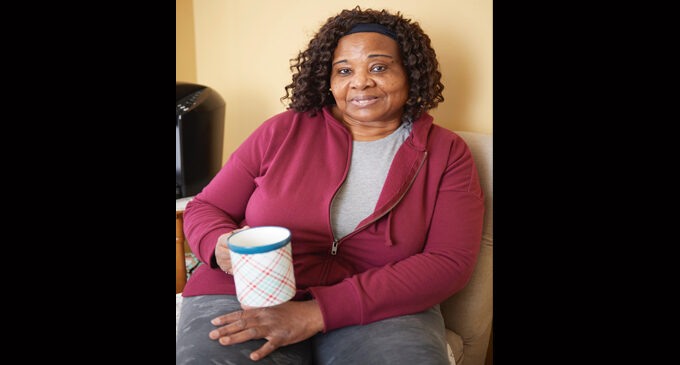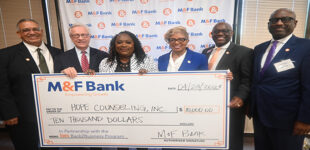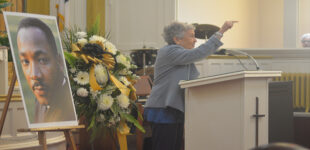Kernersville development is blueprint for scaling up workforce housing
Deidris Reynolds

By John Railey
In the early 2000s, Deidris Reynolds, a hospital secretary, was living in an apartment in southern Winston-Salem. Crime was rampant. She wanted to buy her first home in a safe neighborhood for her three young boys. She enrolled in the Forsyth County Homeownership Program (FCHP), which included financial literacy courses. “I was just determined to move,” she said.
With $6,000 in down-payment assistance from the FCHP in 2004, Reynolds bought a home for $120,500 in the brand new housing development of Berry Garden in Kernersville. She raised her sons in the house, which now has a market value of $231,000. Her oldest two sons graduated from college and have good jobs. “Berry Garden really is the American Dream,” Reynolds said in a recent interview.
Her neighbors agree, reporting similar increases in the value of their homes. Berry Garden sets a needed model for meeting a huge challenge in Forsyth County: that, in the next decade of building thousands of homes affordable for our workforce, including firefighters, restaurant, hospital and biotech workers.As Winston-Salem State University’s Center for the Study of the Economic Mobility (CSEM) studied the efficacy of the FCHP in recent months, it made a realization. “As effective as the problem is, the few dozen clients it puts in homes annually are just a drop in the bucket at meeting the county’s needs,” CSEM Director Craig Richardson said.
One solution to the crisis is scaling up the efforts of organizations, including Habitat for Humanity, the Simon G. Atkins Community Development Corporation and the FCHP. What’s needed is neighborhood after neighborhood of good homes – like Berry Garden, started in the early 2000s by the Housing Partnership of Winston-Salem/Forsyth County and the FCHP, and still thriving. Its 32 houses on a quiet street ending in a cul-de-sac are eclectic and well-kept-up, with children playing, diverse neighbors often chatting and only two or three rental houses. “It’s amazing,” said longtime resident Mark McKinney, a truck driver whose home has increased in value from its $109,500 purchase price to a current market value of $218,500. “I didn’t know how the neighborhood would hold up, whether it would turn into crap. But look around: It’s great.”
A data analysis by CSEM bears out the success of the neighborhood:
*The average value at time of purchase (adjusted to 2022-dollar values) was $168,655 and, as of April 2022, the average value is $223,778.
*For a sample of 24 properties purchased through the FCHP from 2005 to April 2022, the values have appreciated by 33.1% (inflation adjustment).
*Only two purchasers in the sample underwent foreclosure, one in 2007 and one in 2008, during the 17 years of the sample analyzed. (8.3% rate).
Jane Milner, the former president of the no-longer-active Winston-Salem/Forsyth County Housing Partnership, planned the neighborhood, working with the t\Town of Kernersville and its chamber of commerce. Dan Kornelis, a founding member of the partnership, and his staff at the FCHP supplied down-payment assistance and financial literacy courses through the nonprofit Experiment in Self-Reliance and the Center for Homeownership.
“Upon completion, they received about $5,000 toward their down payment,” Milner said. “They could choose between five builders who offered a variety of design choices. Two families had Habitat homes, but the rest had a tiny bit higher income and were able to have bank mortgages. The homes had an energy conservation grant which guaranteed their energy costs for two years.
“The houses ranged from $90,000 to $120,000 in purchase price; household incomes were typically in the $20,000 to $30,000 range. Now the houses are valued at $200,000 and more. Many owners have made improvements to their homes including garages, room additions, porches and even solar panels. This development is a wonderful example of public-private partnerships combining public and private resources. It takes a village and more.”
The Berry Garden residents are Black, white, Hispanic and Asian. They are students and white-collar workers and blue-collar ones. A few have lived in the development since its inception. Several have moved there in recent years and were unaware of the partnership that conceived it. Some said their real estate agents steered them to the development. All of those interviewed praised Berry Garden.
“Nobody knows it’s back here,” said Brenda Beyer, a businesswoman who moved in recently to be near family. “It’s a quiet neighborhood. I have good neighbors, and that’s really important.” A banner bearing the words “Welcome Friends” hangs in her front yard.
Her next-door neighbor, Courtney Whelan, purchased her house with her husband, a quality-control inspector, in 2017 for $130,000. Now, it has a market value of $225,000. The Whelans and their two small children enjoy the neighborhood, but are selling their house to move to Madison so they can be closer to family.
Kornelis, who helped start the FCHP when he was the head of the county’s community and economic development department, said, “The truth is that the program provided a template for success, but the real work was done by the participants who purchased their homes and who have continued to stay in their homes, building equity and wealth in places like Berry Garden.”
Reynolds said: “We need a lot more neighborhoods like this one, because so many more of our residents need to own their homes and build wealth to pass on to their children.”
John Railey, raileyjb@gmail.com, is the writer-in-residence for CSEM, www.wssu.edu/csem.















